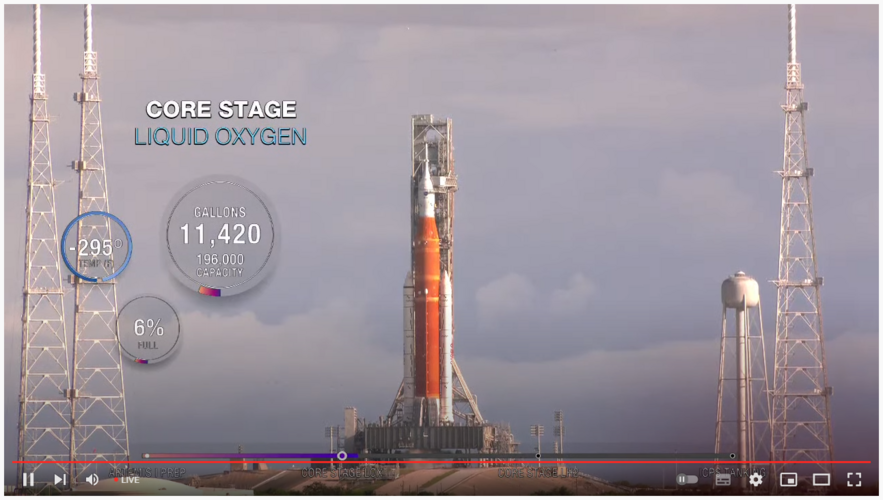Artemis Cryogenic Demonstration Test Concludes, All Objectives Met
The launch director has confirmed all objectives have been met for the cryogenic demonstration test, and teams are now proceeding with critical safing activities and preparations for draining the rocket’s tanks. After encountering a hydrogen leak early in the loading process, engineers were able to troubleshoot the issue and proceed with the planned activities.
The four main objectives for the demonstration included assessing the repair to address the hydrogen leak identified on the previous launch attempt, loading propellants into the rocket’s tanks using new procedures, conducting the kick-start bleed, and performing a pre-pressurization test. The new cryogenic loading procedures and ground automation were designed to transition temperature and pressures slowly during tanking to reduce the likelihood of leaks that could be caused by rapid changes in temperature or pressure. After encountering the leak early in the operation, teams further reduced loading pressures to troubleshoot the issue and proceed with the demonstration test. The pre-pressurization test enabled engineers to calibrate the settings used for conditioning the engines during the terminal count and validate timelines before launch day to reduce schedule risk during the countdown on launch day.
Teams will evaluate the data from the test, along with weather and other factors, before confirming readiness to proceed into the next launch opportunity. The rocket remains in a safe configuration as teams assess next steps.
Follow along for updates on of the
Artemis I mission.










